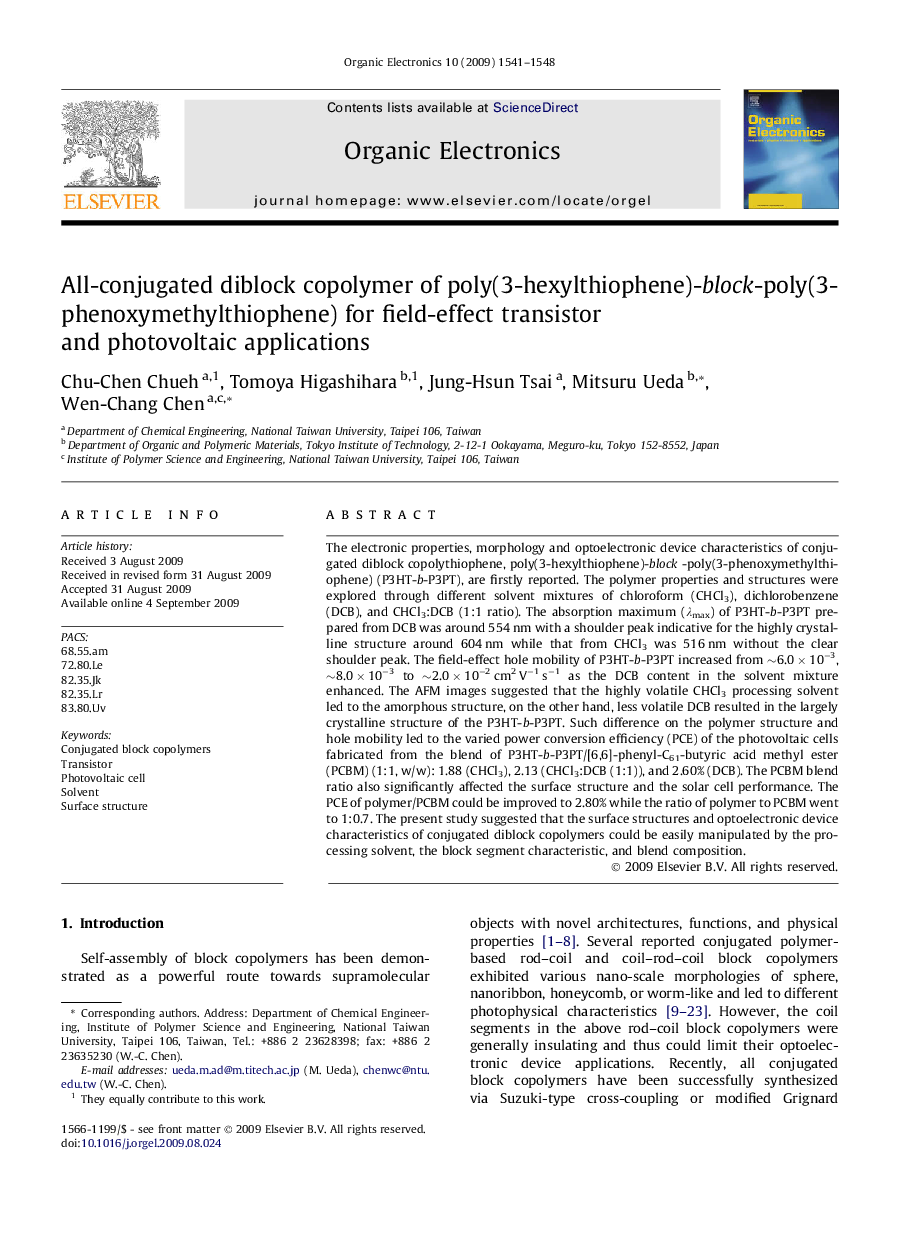| کد مقاله | کد نشریه | سال انتشار | مقاله انگلیسی | نسخه تمام متن |
|---|---|---|---|---|
| 1268059 | 1496842 | 2009 | 8 صفحه PDF | دانلود رایگان |

The electronic properties, morphology and optoelectronic device characteristics of conjugated diblock copolythiophene, poly(3-hexylthiophene)-block -poly(3-phenoxymethylthiophene) (P3HT-b-P3PT), are firstly reported. The polymer properties and structures were explored through different solvent mixtures of chloroform (CHCl3), dichlorobenzene (DCB), and CHCl3:DCB (1:1 ratio). The absorption maximum (λmax) of P3HT-b-P3PT prepared from DCB was around 554 nm with a shoulder peak indicative for the highly crystalline structure around 604 nm while that from CHCl3 was 516 nm without the clear shoulder peak. The field-effect hole mobility of P3HT-b-P3PT increased from ∼6.0 × 10−3, ∼8.0 × 10−3 to ∼2.0 × 10−2 cm2 V−1 s−1 as the DCB content in the solvent mixture enhanced. The AFM images suggested that the highly volatile CHCl3 processing solvent led to the amorphous structure, on the other hand, less volatile DCB resulted in the largely crystalline structure of the P3HT-b-P3PT. Such difference on the polymer structure and hole mobility led to the varied power conversion efficiency (PCE) of the photovoltaic cells fabricated from the blend of P3HT-b-P3PT/[6,6]-phenyl-C61-butyric acid methyl ester (PCBM) (1:1, w/w): 1.88 (CHCl3), 2.13 (CHCl3:DCB (1:1)), and 2.60% (DCB). The PCBM blend ratio also significantly affected the surface structure and the solar cell performance. The PCE of polymer/PCBM could be improved to 2.80% while the ratio of polymer to PCBM went to 1:0.7. The present study suggested that the surface structures and optoelectronic device characteristics of conjugated diblock copolymers could be easily manipulated by the processing solvent, the block segment characteristic, and blend composition.
Journal: Organic Electronics - Volume 10, Issue 8, December 2009, Pages 1541–1548